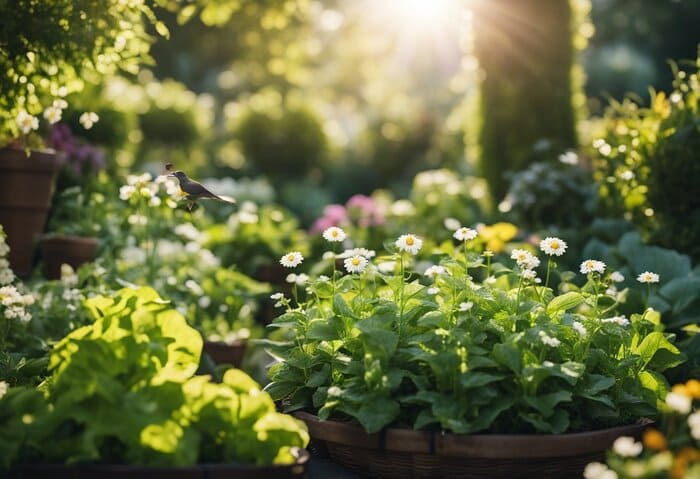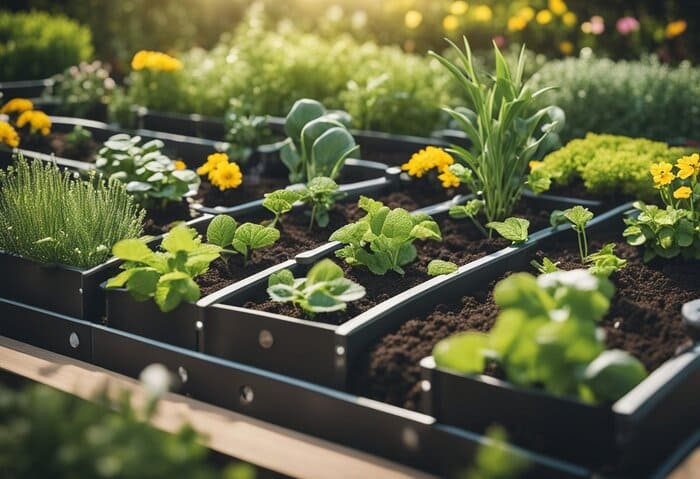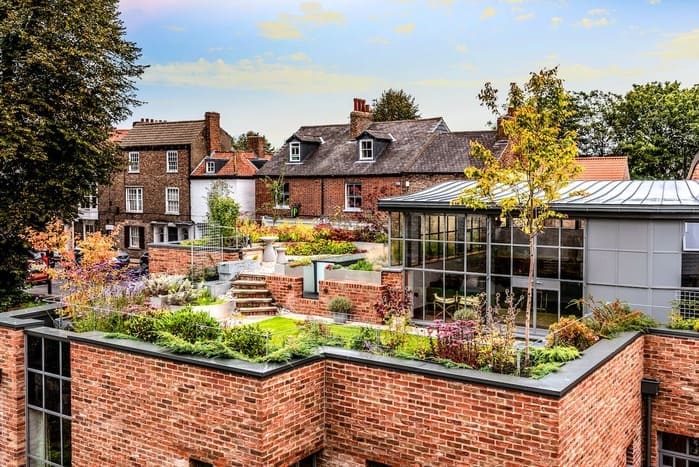ABC Gardening Hobby: Tips and Tricks for Beginners
If you’re looking for a rewarding and enjoyable hobby, gardening might be the perfect fit for you. A B C Gardening is a beginner-friendly approach to gardening that can help you get started and build your confidence. With A B C Gardening, you can learn the basics of gardening and start growing your own plants in no time.
A B C Gardening is a simple and easy-to-follow method that breaks down the gardening process into three basic steps: preparing the soil, planting the seeds, and caring for your plants. By following these steps, you can create a healthy and thriving garden that will provide you with fresh produce, beautiful flowers, and a sense of accomplishment. Whether you have a small balcony or a large backyard, A B C Gardening can help you make the most of your space and create a beautiful and sustainable garden.
With A B C Gardening, you don’t need any prior gardening experience or special equipment. All you need is a willingness to learn and a love for nature. Whether you’re interested in growing vegetables, herbs, or flowers, A B C Gardening can help you get started and achieve your gardening goals. So why not give it a try and see what you can grow?
Benefits of Gardening
Gardening is a wonderful hobby that offers numerous benefits for your physical and mental well-being, as well as the environment. Let’s explore some of the amazing advantages of gardening.
Physical Health Advantages
Gardening is a great way to stay active and get some exercise. It involves a variety of physical movements such as digging, planting, weeding, and watering that can help you burn calories and build strength. According to Healthline, gardening can burn up to 330 calories per hour, which is equivalent to the number of calories burned during a moderate-intensity workout. Additionally, gardening can improve your flexibility, balance, and coordination, which are essential for maintaining good physical health, especially as you age.
Moreover, gardening can provide you with fresh, organic produce that is free from harmful pesticides and chemicals. This means that you can enjoy a healthy and nutritious diet that is rich in vitamins, minerals, and antioxidants. Growing your own fruits and vegetables can also save you money on groceries and reduce your carbon footprint by minimizing the transportation and packaging of food.
Mental Well-Being
Gardening is not just good for your physical health, but also your mental well-being. It can help you reduce stress, anxiety, and depression by providing a calming and meditative environment. According to Cleveland Clinic, gardening can lower cortisol levels, which are associated with stress, and increase serotonin levels, which are associated with happiness and well-being.
Moreover, gardening can boost your self-esteem and sense of accomplishment by allowing you to create something beautiful and productive. It can also provide you with a sense of purpose and connection to nature, which can help you feel more grounded and fulfilled.
Environmental Impact
Gardening can also have a positive impact on the environment by reducing your carbon footprint and promoting biodiversity. By growing your own food, you can reduce the amount of energy and resources required for food production, processing, and transportation. You can also minimize food waste by only harvesting what you need, and composting the rest.
Additionally, gardening can provide habitat and food for beneficial insects, and other wildlife, which can help promote biodiversity and ecological balance. By choosing native plants and avoiding harmful pesticides and chemicals, you can create a garden that is both beautiful and sustainable.
In summary, gardening is a rewarding hobby that offers numerous benefits for your physical and mental well-being, as well as the environment. So, grab your gloves and trowel and start digging!
Basic Gardening Concepts
If you’re new to gardening, there are some basic concepts you need to understand before you start. In this section, we’ll cover the three most important concepts: understanding soil types, plant selection, and gardening tools and equipment.
Understanding Soil Types
The first step in gardening is to understand the different types of soil. There are three main types of soil: sand, silt, and clay. Each type of soil has its own characteristics, which can affect plant growth.
- Sand: Sand is the largest particle size of soil. It is well-draining but doesn’t hold moisture or nutrients well. If you have sandy soil, you’ll need to add organic matter to improve its ability to hold water and nutrients.
- Silt: Silt is a medium particle size of soil. It is well-draining and holds moisture and nutrients better than sand. However, it can become compacted easily, which can make it difficult for roots to grow.
- Clay: Clay is the smallest particle size of soil. It holds water and nutrients well but can become waterlogged and compacted. If you have clay soil, you’ll need to add organic matter to improve its drainage and loosen it up.
Plant Selection
Choosing the right plants for your garden is crucial for success. Consider the following factors when selecting plants:
- Climate: Choose plants that are suited to your climate. If you live in a hot, dry climate, choose plants that are drought-tolerant. If you live in a cool, wet climate, choose plants that can handle moisture.
- Sunlight: Choose plants that are suited to the amount of sunlight your garden gets. If you have a shady garden, choose plants that can handle low light levels.
- Soil: Choose plants that are suited to your soil type. If you have sandy soil, choose plants that can handle dry conditions. If you have clay soil, choose plants that can handle wet conditions.
Gardening Tools and Equipment
Having the right tools and equipment can make gardening much easier. Here are some essential tools and equipment you’ll need:
- Gloves: Gloves protect your hands from thorns, splinters, and other hazards.
- Trowel: A trowel is a small shovel that is used for planting and digging.
- Pruners: Pruners are used for cutting back plants and removing dead or damaged branches.
- Watering can or hose: You’ll need a way to water your plants. A watering can is good for small gardens, while a hose is better for larger gardens.
- Wheelbarrow: A wheelbarrow is useful for moving soil, plants, and other heavy items around your garden.
By understanding soil types, choosing the right plants, and having the right tools and equipment, you’ll be well on your way to creating a successful garden.
Gardening Techniques
Sowing and Planting
To start your gardening hobby, you need to learn how to sow and plant seeds. Choose the right seeds based on your location, climate, and soil type. You can start indoors or outdoors, depending on the plant’s needs and the season. Follow the instructions on the seed packet for the best results. Some seeds need to be soaked before planting, while others need to be scarified or stratified. Make sure you sow the seeds at the right depth and spacing. You can use a planting chart or a seed spacing tool to help you. After planting, water the seeds gently and cover them with soil or mulch.
Watering and Feeding
Watering and feeding your plants are crucial for their growth and health. You need to water your plants regularly, especially during hot and dry weather. Use a watering can, a hose, or a drip irrigation system to water your plants. Water the roots, not the leaves, to avoid fungal diseases. You can also use a moisture meter to check if the soil is dry or moist. Fertilize your plants with organic or synthetic fertilizers to provide them with essential nutrients. You can use a slow-release fertilizer or a liquid fertilizer, depending on your preference. Follow the instructions on the fertilizer package and avoid over-fertilizing your plants.
Pruning and Maintenance
Pruning and maintenance are necessary to keep your plants healthy and attractive. You need to prune your plants regularly to remove dead or diseased branches, promote new growth, and shape the plant. Use clean and sharp pruning shears to avoid damaging the plant. You can also train your plants to grow in a certain shape or direction by using stakes or trellises. Maintenance tasks include weeding, mulching, and pest control. Remove weeds regularly to avoid competition with your plants. Mulch your plants with organic matter to retain moisture and suppress weeds. Use natural or chemical pest control methods to prevent or treat pest infestations.
Designing Your Garden
Designing your garden is an essential step towards creating a beautiful and functional outdoor space. Here are some tips to help you get started.
Garden Layout Planning
Before you start planting, it’s important to plan out the layout of your garden. Consider the size and shape of your space, as well as the amount of sunlight and shade it receives. You should also evaluate the soil quality and drainage to determine which plants will thrive in your garden.
When planning your garden layout, you may want to consider creating different zones for different purposes. For example, you could have a vegetable garden, a flower garden, and a seating area. You may also want to consider adding pathways or borders to define each zone and create a cohesive look.
Choosing a Color Scheme
Choosing a color scheme for your garden can help create a cohesive and visually appealing look. You may want to consider the colors of your home’s exterior or the surrounding landscape when selecting your color scheme.
One popular color scheme is the monochromatic scheme, which uses different shades of the same color for a harmonious look. Another option is the complementary color scheme, which uses colors that are opposite each other on the color wheel, such as purple and yellow or blue and orange.
Incorporating Hardscape Elements
In addition to plants, hardscape elements such as paths, patios, and retaining walls can add structure and visual interest to your garden. When incorporating hardscape elements, it’s important to consider the style of your home and the surrounding landscape.
You may want to choose materials that complement the colors and textures of your plants, such as natural stone or wood. You should also consider the function of each hardscape element and ensure that it is placed in a way that maximizes its usefulness.
By following these tips, you can design a beautiful and functional garden that you’ll enjoy for years to come.
Problem-Solving in Gardening
Gardening can be a rewarding and relaxing hobby, but it also comes with its own set of challenges. As a gardener, you need to be prepared to face a variety of issues that can arise in your garden. Here are some common problems you might encounter and how to solve them.
Pest Management
Pests can be a major problem for gardeners. They can damage your plants and ruin your hard work. Some common garden pests include aphids, slugs, snails, and caterpillars. To manage pests in your garden, you can:
- Use natural predators: Encourage natural predators like ladybugs and lacewings to live in your garden. They can help control pest populations.
- Use organic pesticides: If natural predators are not enough, use organic pesticides like neem oil or insecticidal soap. These are less harmful to the environment than chemical pesticides.
- Practice good garden hygiene: Keep your garden clean and tidy to reduce the risk of pest infestations.
Disease Prevention
Diseases can spread quickly in a garden and can be difficult to control. Some common garden diseases include powdery mildew, black spot, and blight. To prevent diseases in your garden, you can:
- Choose disease-resistant plants: When selecting plants for your garden, choose varieties that are resistant to common diseases in your area.
- Practice good garden hygiene: Keep your garden clean and tidy to reduce the risk of disease. Remove dead or diseased plant material promptly.
- Use organic fungicides: If necessary, use organic fungicides like copper sulfate or sulfur to control fungal diseases.
Weather Challenges
Weather can be unpredictable and can cause problems in your garden. Extreme heat, cold, drought, or heavy rain can all affect your plants. To manage weather challenges in your garden, you can:
- Choose plants that are suited to your climate: Select plants that are adapted to the climate in your area. This will make them more resilient to weather extremes.
- Provide shade: If your plants are getting too much sun, provide some shade with a shade cloth or by planting taller plants nearby.
- Water your plants properly: Water your plants deeply and infrequently to encourage deep root growth. This will help them withstand drought conditions.
By being prepared and knowing how to solve common gardening problems, you can enjoy a thriving garden.
Seasonal Gardening Activities
Gardening is a year-round hobby that requires different tasks to be performed in each season to maintain a healthy and thriving garden. In this section, we will cover the seasonal gardening activities you should consider for your A B C gardening hobby.
Spring Gardening Tasks
Spring is the time when your garden comes back to life after the winter months. It is the perfect time to prepare your garden for the growing season ahead. Here are some tasks you should consider:
- Clear out debris and dead leaves from the garden beds.
- Prune trees and shrubs to promote new growth.
- Plant new flowers, vegetables, and herbs.
- Fertilize the soil to provide nutrients to the plants.
- Mulch the garden beds to prevent weed growth and retain moisture.
Summer Maintenance
Summer is the time when your garden is in full bloom. It is important to maintain your garden during this season to ensure it continues to thrive. Here are some tasks you should consider:
- Water your plants regularly to keep them hydrated.
- Deadhead flowers to promote new growth.
- Weed your garden beds to prevent them from taking over.
- Monitor your plants for pests and diseases and take appropriate action.
- Harvest vegetables and herbs as they become ready.
Autumn Preparation
Autumn is the time when your garden starts to wind down for the year. It is important to prepare your garden for the winter months ahead. Here are some tasks you should consider:
- Rake leaves and debris from your garden beds.
- Cut back perennials to prevent them from becoming damaged during the winter months.
- Plant spring-blooming bulbs such as tulips and daffodils.
- Fertilize your lawn to promote healthy growth in the spring.
- Cover your garden beds with a layer of compost to provide nutrients to the soil.
Winter Protection
Winter is the time when your garden goes into hibernation. It is important to protect your garden during this season to ensure it survives until spring. Here are some tasks you should consider:
- Cover your garden beds with a layer of mulch to protect the soil from freezing temperatures.
- Protect your trees and shrubs from heavy snow and ice by tying them up with twine.
- Bring potted plants indoors to protect them from the cold.
- Monitor your garden for pests and diseases and take appropriate action.
- Plan your garden for the upcoming growing season.
Community and Urban Gardening
If you are interested in gardening but don’t have a lot of space, consider starting a community garden. Community gardening is a great way to grow fresh produce and connect with other gardeners in your area. Here are some tips for starting a community garden:
Starting a Community Garden
- Find a suitable location: Look for a space that has access to sunlight, water, and good soil. You may need to get permission from the property owner or local government to use the space.
- Recruit volunteers: Reach out to your community and find others who are interested in gardening. You can advertise your garden in local newspapers, on social media, or by putting up flyers.
- Plan the garden: Decide what crops you want to grow and how you want to organize the garden. Consider using raised beds, vertical gardening, or companion planting to maximize space and yield.
- Get the necessary supplies: You will need gardening tools, seeds, soil, and fertilizer. Consider asking local businesses or organizations for donations or sponsorships.
- Maintain the garden: Regularly water, weed, and harvest your crops. Encourage volunteers to take ownership of the garden and help with maintenance.
Balcony and Rooftop Gardening
If you live in an apartment or have limited outdoor space, balcony and rooftop gardening are great options. Here are some tips for getting started:
- Choose the right plants: Select plants that are well-suited for container gardening, such as herbs, tomatoes, and peppers. Make sure they have access to sunlight and water.
- Use the right containers: Choose containers that are large enough for the plant’s root system and have good drainage. Consider using self-watering containers or vertical gardening systems to maximize space.
- Provide adequate support: Some plants, such as tomatoes and cucumbers, will need support structures like trellises or stakes.
- Regularly maintain the garden: Water, fertilize, and prune your plants regularly to ensure they stay healthy.
Explore “The Amazing Benefits of Houseplants” to enhance your understanding of how indoor plants can complement your balcony or rooftop garden.
Window Boxes and Container Gardening
Window boxes and container gardening are great options if you want to add some greenery to your windowsills or small outdoor spaces. Here are some tips for getting started:
- Choose the right plants: Select plants that are well-suited for container gardening, such as herbs, succulents, and small flowers. Make sure they have access to sunlight and water.
- Use the right containers: Choose containers that are the right size for your plants and have good drainage. Consider using self-watering containers or hanging baskets to maximize space.
- Provide adequate support: Some plants, such as vining plants, will need support structures like trellises or stakes.
- Regularly maintain the garden: Water, fertilize, and prune your plants regularly to ensure they stay healthy.
By following these tips, you can start your own community or urban garden and enjoy fresh produce all season long.
Gardening for Wildlife
Gardening for wildlife is a great way to create a natural habitat for local flora and fauna in your own backyard or garden. By providing food, shelter, and water, you can support biodiversity and attract various species of wildlife to your garden. Here are some tips on how to make your garden a haven for wildlife.
Attracting Pollinators
Pollinators such as bees, butterflies, and hummingbirds play a crucial role in the ecosystem by transferring pollen from one plant to another, enabling plants to produce fruits and seeds. To attract pollinators to your garden, you can:
- Plant native flowering plants that provide nectar and pollen, such as milkweed, sunflowers, and wildflowers.
- Provide a source of water, such as a bird bath or a shallow dish with pebbles for bees to rest on.
- Avoid using pesticides and herbicides, which can harm pollinators.
Creating Habitats for Wildlife
Creating habitats for wildlife in your garden can provide shelter and nesting sites for various species. Here are some ways to create habitats for wildlife:
- Provide nesting boxes for birds, bats, and other animals.
- Create a brush pile or a rock pile for small animals to hide in.
- Install a bird feeder or a squirrel feeder to provide food for wildlife.
Eco-Friendly Gardening Practices
Eco-friendly gardening practices can help reduce your impact on the environment and create a more sustainable garden. Here are some eco-friendly gardening practices you can implement:
- Use compost instead of synthetic fertilizers to improve soil health.
- Mulch your garden to retain moisture and suppress weeds.
- Collect rainwater in a barrel to water your garden instead of using tap water.
By implementing these gardening practices, you can create a beautiful and sustainable garden that supports local wildlife and contributes to a healthier ecosystem.
Advancing Your Gardening Hobby
If you’ve been gardening for a while and want to take your hobby to the next level, there are several ways to do so. Here are some ideas to consider:
Joining Gardening Clubs
Joining a gardening club can be a great way to meet other gardeners, learn new techniques, and share your own knowledge and experience. Many clubs offer regular meetings, workshops, and events, as well as opportunities to visit other gardens and participate in community projects. Look for clubs in your area by searching online or checking with your local nursery or garden center.
Exploring Horticulture
Horticulture is the science and art of growing plants, and it encompasses many different areas of study, including plant breeding, propagation, and disease management. If you’re interested in learning more about the science behind gardening, consider taking courses or reading books on horticulture. You can also explore different types of gardening, such as hydroponics or permaculture, to expand your knowledge and skills.
Gardening Education and Resources
There are many resources available to help you improve your gardening skills and knowledge. Online forums and social media groups can be a great way to connect with other gardeners and get advice and feedback on your projects. You can also find a wealth of information on gardening blogs, podcasts, and YouTube channels. If you prefer more traditional resources, check out gardening books, magazines, and newsletters from reputable sources. And don’t forget to take advantage of your local nursery or garden center’s expertise and resources. They can often provide personalized advice and recommendations based on your specific needs and interests.
By exploring these options and continuing to learn and grow as a gardener, you can take your hobby to new heights and enjoy even more satisfaction and enjoyment from your gardening projects.
Frequently Asked Questions
What are the benefits of gardening as a leisure activity?
Gardening is a great way to relax and unwind after a long day. It is also a rewarding hobby that can provide you with fresh produce and beautiful flowers. Gardening can help you connect with nature and reduce stress levels. Additionally, it can be a great way to spend quality time with family and friends.
How does engaging in gardening impact mental health?
Gardening has been shown to have a positive impact on mental health. It can help reduce stress, anxiety, and depression. Gardening can also provide a sense of accomplishment and boost self-esteem. Spending time in nature has been shown to improve mood and overall well-being.
Can gardening activities improve physical fitness?
Gardening can be a great way to improve physical fitness. It involves a lot of physical activity such as digging, planting, weeding, and watering. These activities can help improve strength, flexibility, and cardiovascular health. Gardening can also be a low-impact exercise option for older adults.
What are the essential tools needed to start a gardening hobby?
Starting a gardening hobby does not require a lot of tools. Some essential tools include a trowel, pruner, gloves, watering can, and a rake. These tools can help you plant, prune, and maintain your garden. As you gain more experience, you may want to invest in additional tools such as a wheelbarrow or a hoe.
How can one start a small garden in limited indoor space?
Starting a small garden in limited indoor space is possible with the right tools and knowledge. You can start by choosing plants that are suitable for indoor growing such as herbs, succulents, or small vegetables. You will need a container, potting soil, and a light source. Make sure to choose a container with good drainage and place it in a well-lit area.
What are some tips for beginners to maintain a healthy garden?
Maintaining a healthy garden requires regular care and attention. Some tips for beginners include watering your plants regularly, pruning them when necessary, and checking for pests and diseases. Make sure to fertilize your plants as needed and remove any dead or damaged leaves. It is also important to rotate your crops to prevent soil depletion.
RECENT POSTS
History of Baseball
History of Baseball: From Its Origins to Modern TimesBaseball is one of the most popular sports in the United States, with millions of fans tuning in to watch games each year. The sport has a [...]
Hunting Falconry
History of Hunting Falconry: An Overview of Falconry's Evolution and Significance Are you interested in learning about the ancient practice of hunting with trained birds of prey? Falconry has been practiced for thousands of [...]
Hunting Destinations in 2024
Hunting Destinations in 2024: Top Picks for Avid Hunters Are you looking for exciting hunting destinations to explore in 2024? Whether you're a seasoned hunter or just starting, there are plenty of options available [...]
History of hunting dogs
Explore the History and Significance of Hunting Dogs: A Comprehensive Guide If you're a hunting enthusiast, then you know the importance of having a reliable hunting dog by your side. Hunting dogs have been [...]
Hunting as a Hobby
Hunting as a Hobby: An Overview Hunting is a popular outdoor activity enjoyed by millions of people worldwide. While some hunt for food, others do it as a hobby. Hunting as a hobby can [...]
















